How To Grow Your Own Bromeliads

Definitely not prima donnas of the plant world, bromeliads are extremely tough and will reward you with continuous colour and form.
And as most are epiphytes, growing harmlessly on other plants, they’re also waterwise, which is a requirement that most gardeners look for in a plant.
In the wild, epiphytic bromeliads often grow on rocks or in tree canopies, attached to a trunk or branch. Here, they eke out their existence, collecting whatever water or organic matter happens to fall onto their leaves.
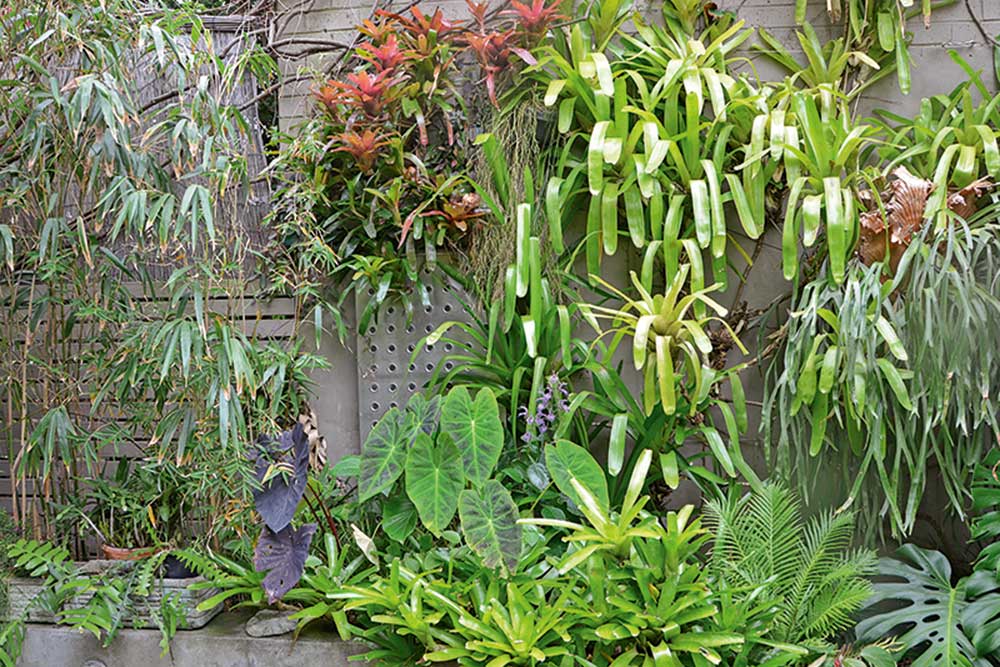
Use bromeliads to decorate bare fences, walls or screens to add colour and an air of mystery to the garden
Plant in beds
While bromeliads are epiphytes, they can still be grown in the ground.
SOIL needs to be free-draining or they’ll rot at the base. You can correct drainage by adding orchid potting mix to raise the soil’s height. Or, plant in a pot with the rim resting above the ground.
POSITION in semi-shade or full shade. But as they come from a wide range of environments, from deep shade to blazing sun, you’ll find a species suitable for most situations. Varieties such as Neoregelia, Tillandsia, Billbergia, Dyckia and Aechema will tolerate full sun.
PLANT at the same height as in the pot. Water lightly and top up the water in the cup or vase.
WATER when the soil’s surface has nearly dried out. In winter, water every 2-3 weeks. Keep the cup full, but flush it often so the water doesn’t stagnate.
FEED with a water-soluble fertiliser at quarter strength every six months. Apply it at the plant base, not in the cup.
How they hydrate
To collect rain and organic matter, the leaves of many species combine to form a vase or tank-like structure that holds a reservoir of water.
The leaves absorb the water and nutrients directly, and the roots of most species do little more than anchor the plant onto the tree.
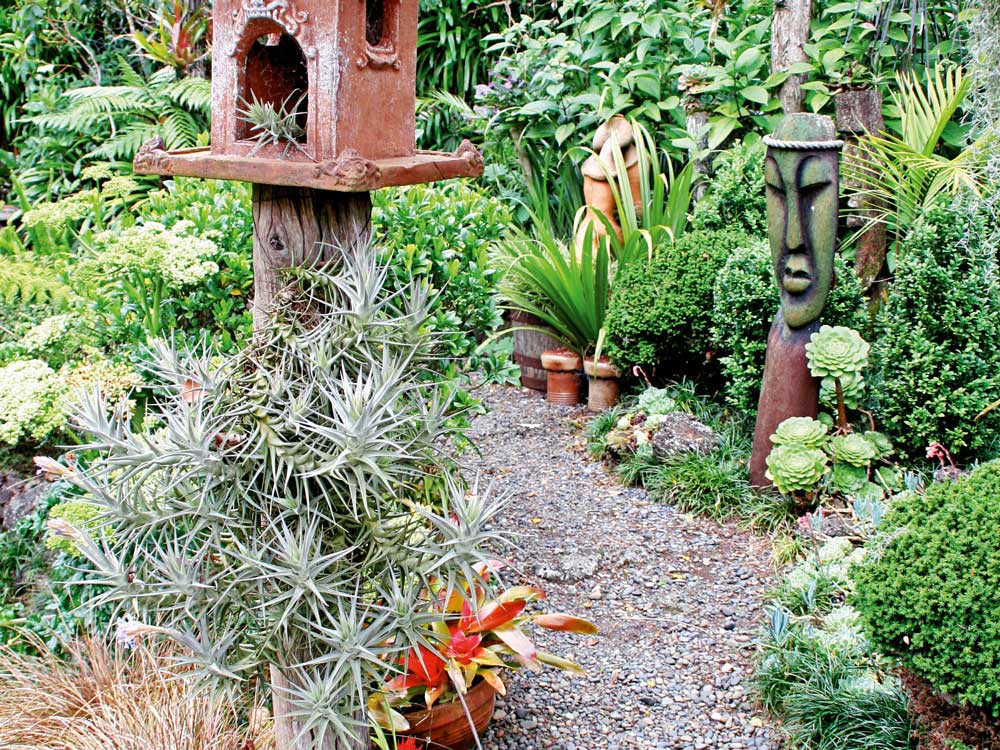
Overwatering causes more bromeliads to die than underwatering
Plant in pots
Bromeliads look striking planted in either pots or hanging baskets on balconies and in courtyards.
When they’re grouped in pots of varying heights, they make permanent eye-catching colour statements.
Mix and match different colours in the one pot or try the giant bromeliad Alcantarea imperialisfor star status.
POTTING MIX should be light and open. Use a combination of half all-purpose mix and half orchid mix.
PLANT so the mix comes 10-20mm above the base of the plant. If planted too deeply, the root and vase will rot.
WATER to keep the vase full, but don’t overwater, and flush the vase often to prevent water stagnation.
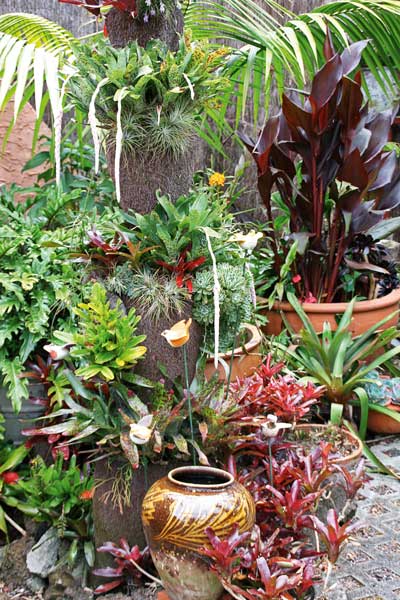
Bromeliads look striking planted in pots
Weighty matter
You can attach bromeliads to tree trunks or branches, old tree stumps, tall tree ferns and palm trunks. Large plants can be placed in the forks of trees or on stumps in beds.
WRAP the root system lightly in sphagnum moss or coconut fibre, fasten with plastic-coated wire or a soft tie, then attach to the tree trunk and forks. Strips of pantyhose work well.
ATTACH to tree fern trunks by making a hole in the trunk and placing the base of the plant in the hole. Secure with a soft tie until the plant has taken root.
WEDGE bromeliads into palm pockets on the trunk or fasten as for tree trunks.
WATER over the foliage and at the plant base 2-3 times weekly in hot weather and at least weekly in winter.
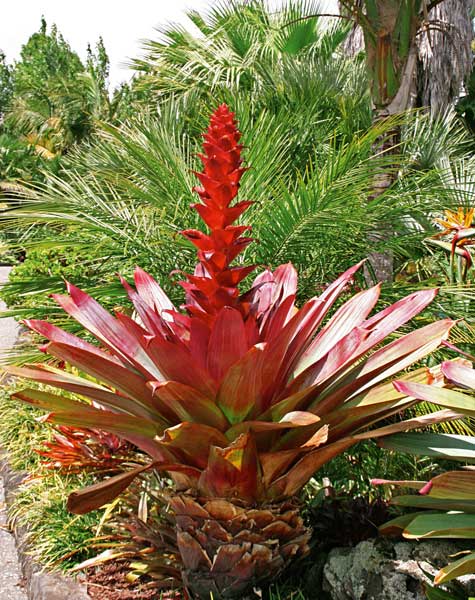
The flower spike of Alcantarea imperialis grows up to 3.5m high
Raise on trees
You can attach bromeliads to tree trunks or branches, old tree stumps, tall tree ferns and palm trunks. Large plants can be placed in the forks of trees or on stumps in beds.
WRAP the root system lightly in sphagnum moss or coconut fibre, fasten with plastic-coated wire or a soft tie, then attach to the tree trunk and forks. Strips of pantyhose work well.
ATTACH to tree fern trunks by making a hole in the trunk and placing the base of the plant in the hole. Secure with
a soft tie until the plant has taken root.
WEDGE bromeliads into palm pockets on the trunk or fasten as for tree trunks.
WATER over the foliage and at the plant base 2-3 times weekly in hot weather and at least weekly in winter.
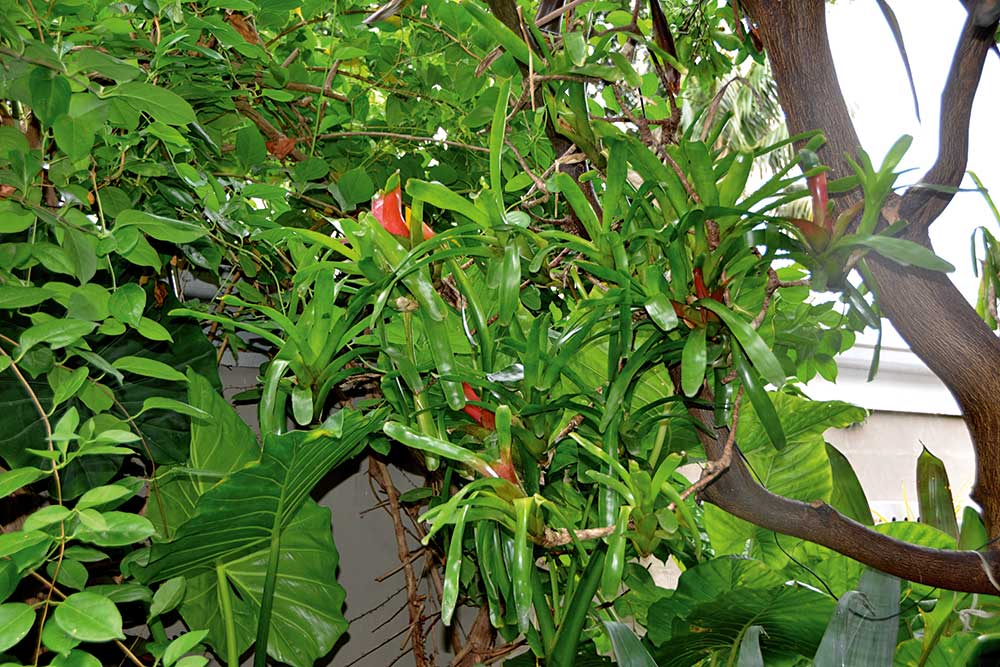
Caring for air plants
These bromeliads survive in the wild by attaching themselves to trees, desert cacti, cliff faces and rocks.
Their common name, air plant, gives a fairly accurate description of how they live. They don’t need soil and require very little water.
Air plants are xerophytic epiphytes and absorb moisture and nutrients through the scale coating on their leaves. While they require very little attention, good air movement around the plants is essential.
GLUE tillandsias to their host using Selleys Liquid Nails or Selleys All Clear Sealant.
TIE a tillandsia to its host using plastic-covered wire, string, strips of pantyhose or budding tape.
PROTECT tillandsias from frosts.
USE a mist spray only, spraying fortnightly in the mornings during winter and at least three times a week after the heat of the day in summer.
FEED in spring and autumn using a half strength or weaker solution of liquid fertiliser when misting.
Did you know?
The pineapple (Ananas comosus), is a bromeliad. It was grown in Europe in the 1600s by the wealthy, who could afford to build heated greenhouses.
You can now grow your own. Simply select a ripe pineapple, cut off the top leaf section and flesh until you’re left with a stub, then remove the lower leaves. Allow it to dry for a day, then plant the stub in a bed or pot. You’ll be picking your own in a couple of years.
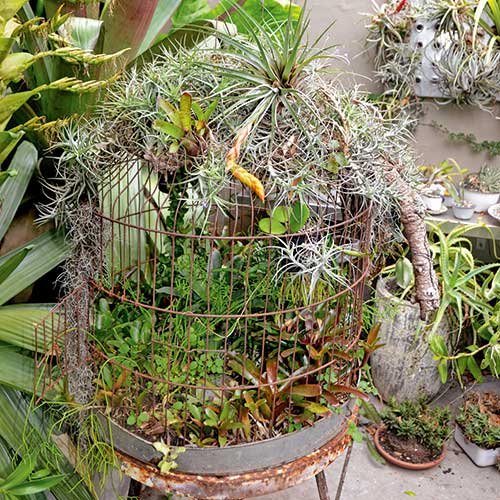
Attach air plants to birdcages, driftwood, logs and picture frames. Have fun and let your imagination run wild
Create a feature
Make a hanging ball of Tillandsia aeranthos. Commonly called carnation of the sky, its grey-green leaves do have a carnation-like appearance. Use bird or chicken wire to form the ball and attach the plants to the wire.
Spanish moss (Tillandsia usneoides) differs in appearance from other tillandsias in that its thin leaves grow at intervals along a slender stem that can become metres long.
It’s striking as a feature in itself, hung from trees or used as a curtain to screen a view or provide privacy.
Or, you can turn a stand into a ball of colour by covering it with Spanish moss and carnation of the sky.
Step 1. Wind wire mesh
Wind wire mesh around the base of a stand, then form a ball shape extending above the top.
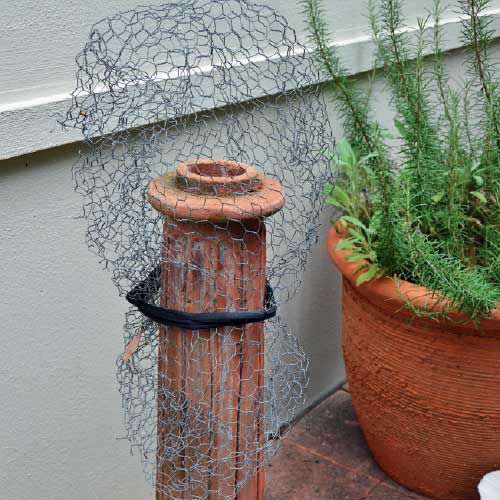
Step 2. Attach plants
Attach a mix of carnation of the sky and Spanish moss to the wire frame with soft ties for a striking display.
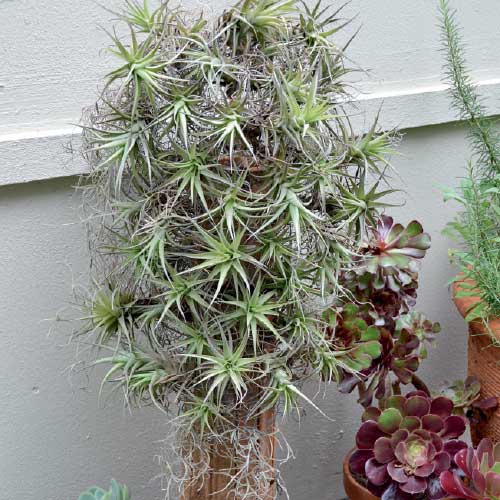
How to propagate bromeliads
After a plant has flowered, it will slowly die in a year or two, but will replace itself with offsets, known as pups.
These arise from the base or from in between the leaves of the mother plant. They can easily be detached and potted, mounted on a tree or planted in a garden bed.





